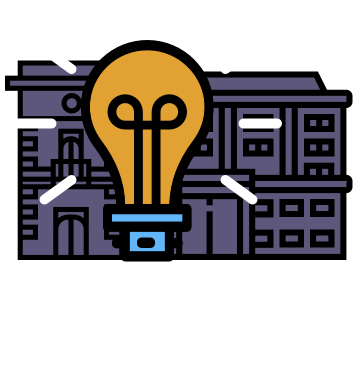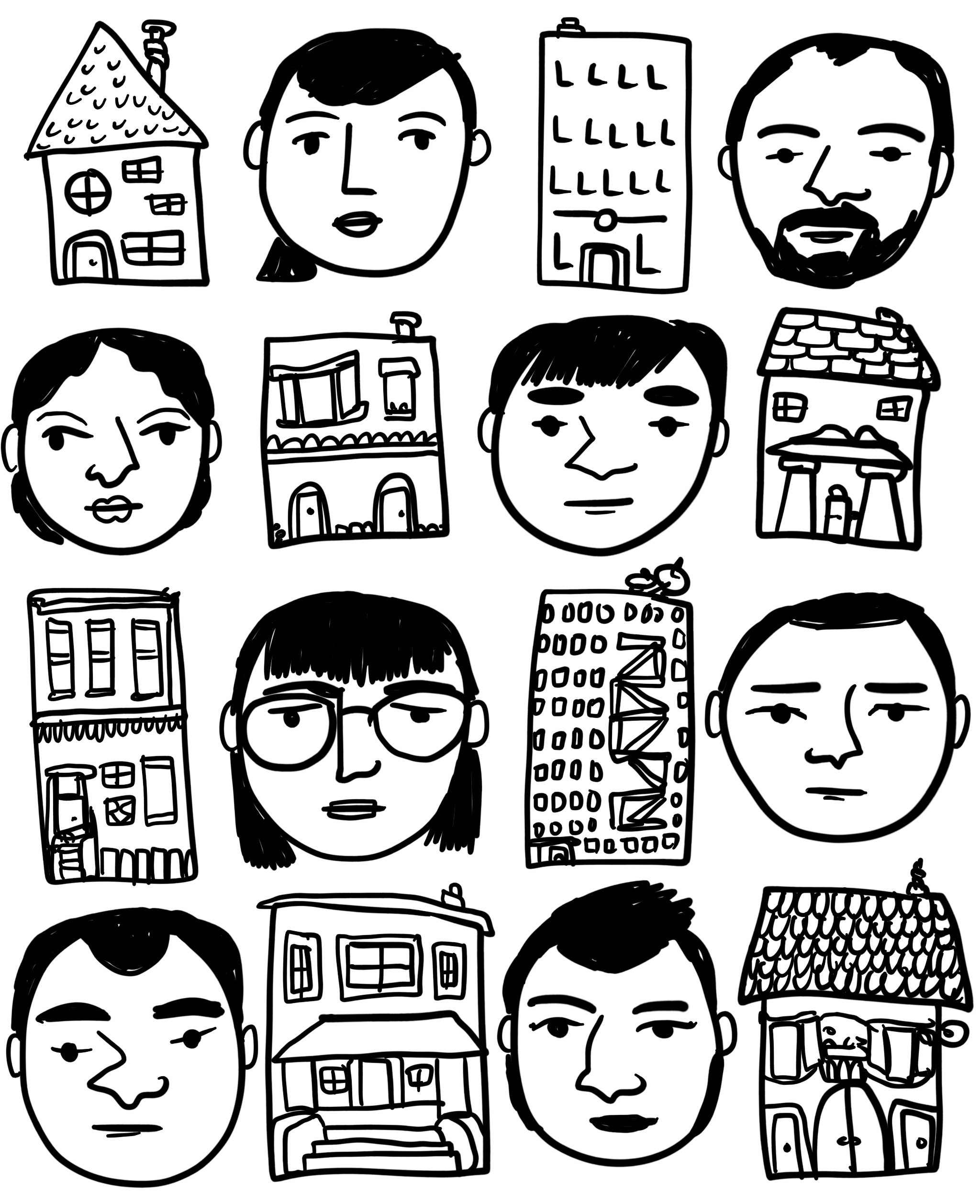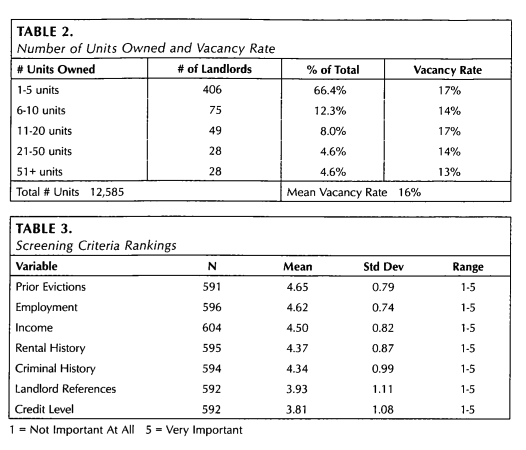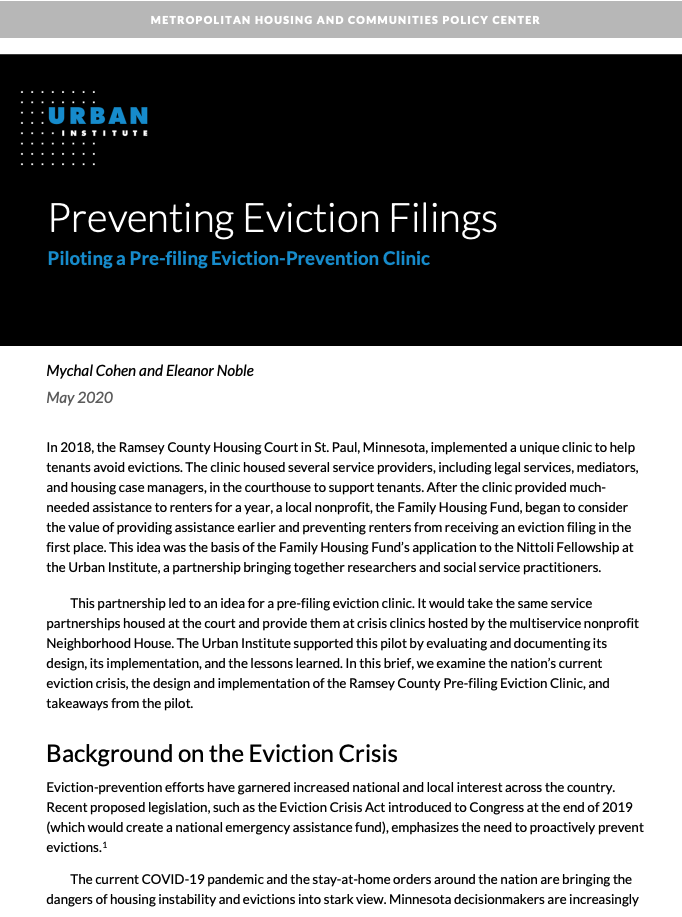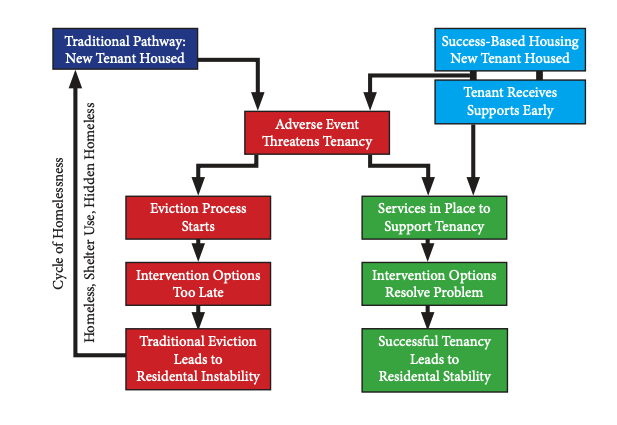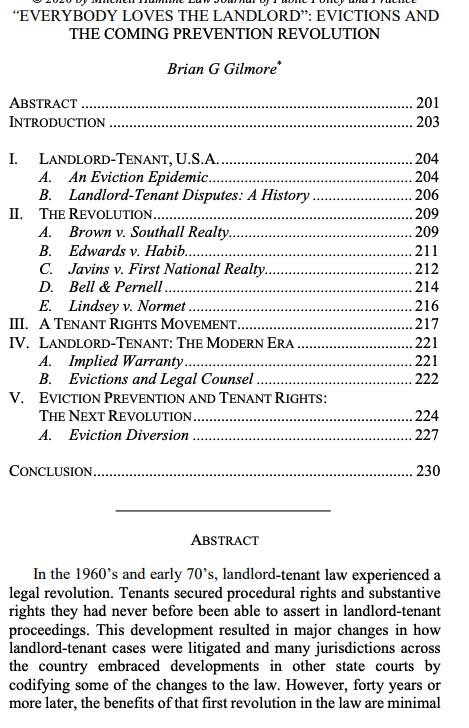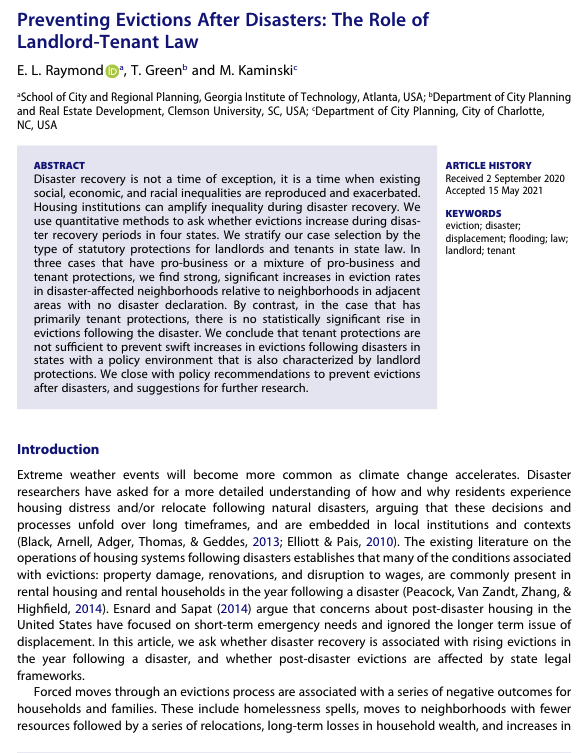- What is the eviction crisis?
- How many people get eviction orders against them?
- Overview of the Eviction Process
- Eviction and Housing Reports and News Articles by State
- National Eviction reports
- California Eviction reports
- Hawaii Eviction Reports
- Illinois Eviction Reports
- Louisiana Eviction Reports
- Maryland Eviction Reports
- Massachusetts Eviction Reports
- Michigan Eviction Reports
- New York Eviction Reports
- Ohio Eviction Reports
- Pennsylvania Eviction Reports
- Virginia State Eviction Reports
- Washington State Eviction Reports
- Washington D.C. Eviction Reports
- Wisconsin Eviction Reports
- Academic Research on Eviction and the Housing Crisis
- Organizations working on the eviction crisis
What is the eviction crisis?
How many people face eviction in the US?
As of mid-2021, an estimated 15 million people in America are at risk of eviction, according to a report from the Aspen Institute.
This risk estimate is based on how behind on rent a household is, and the amount of cost-burden that a household is. If a household spends at least 30% of their income on rent and utilities, they are cost-burdened.
A 2020 study from Harvard (looking at pre-pandemic dynamics) found that 48% of all renter households were cost-burdened. These numbers are higher for people of color. This study found that 55% of black renters and 53% of Latinx renters are cost-burdened.
How many people get eviction orders against them?
In 2016, there were an estimated 900,000 ‘formal’ evictions through the US court system, with 2.3 million people evicted, according to the Princeton Eviction Lab. This does not include informal evictions, outside the courts.
See more about local eviction filing rates and court order data at the Eviction Lab website.
What effects does an eviction have on people?
An eviction — the lawsuit, the order, and the set out — can lead to serious collateral consequences for the family that has been displaced. An eviction can harm:
- Housing stability + homelessness
- Kids’ educational outcomes and future careers
- Credit Reports + future rental options
- Employment and job loss
- Physical and mental health
- Neighborhood resilience
Overview of the Eviction Process
Most formal evictions go through set phases (though each local jurisdiction has different timelines and legal protections for these):
- Tenants and landords make a rental agreement and move in,
- Problems emerging, like around nonpayment of rent, lease issues, or the landlord wanting to change the arrangement;
- Notice is given, in which a landlord lets the tenant know that an eviciton might be coming — and possibly gives htem a chance to fix issues like money owed or behavior to change
- Landlord files a lawsuit in the local civil court to ask for an order to remove the tenant from the home
- The court considers whether to give this landlord an order. If they do, then they issue an official document that hte landlord can give to law enforcement.
- The landlord has law enforcemnt use the court order to officially set out the person and their property from teh home.
- The tenant deals with all the downstream consequences of being evicted, and having court records of the eviction action.
Formal (or official evictions) go through the courts. Not all follow the process above. Sometimes the landlord and tenant can work out a settlement agreement to stop a lawsuit. Other times, a tenant just moves out rather than going through court. (Even if a tenant moves out, they may still have the eviction mark on their record, which can have downstream consequences.)
Informal (or illegal, or unofficial evictions) are done without going to court — and possibly done illegally through pressure by landlords on tenants. In these instances, landlords get tenants to move out without filing a lawsuit against them, and getting an official order. Rather, they use other tactics to pressure a person to leave.
The timeline presents the general legal process of an official eviction (this can differ in jurisdictions, but this is typically the process that eviction lawsuits follow).

From a broader perspective (beyond just the court), evictions typically grow out of problems around rent or lease clauses. They then go through a warning period, then escalate to the court. At court, judgments and orders formalize the eviction. Then there are the after-effects that happen to the tenant and her family: around health, education, housing, domestic violence, and poverty.
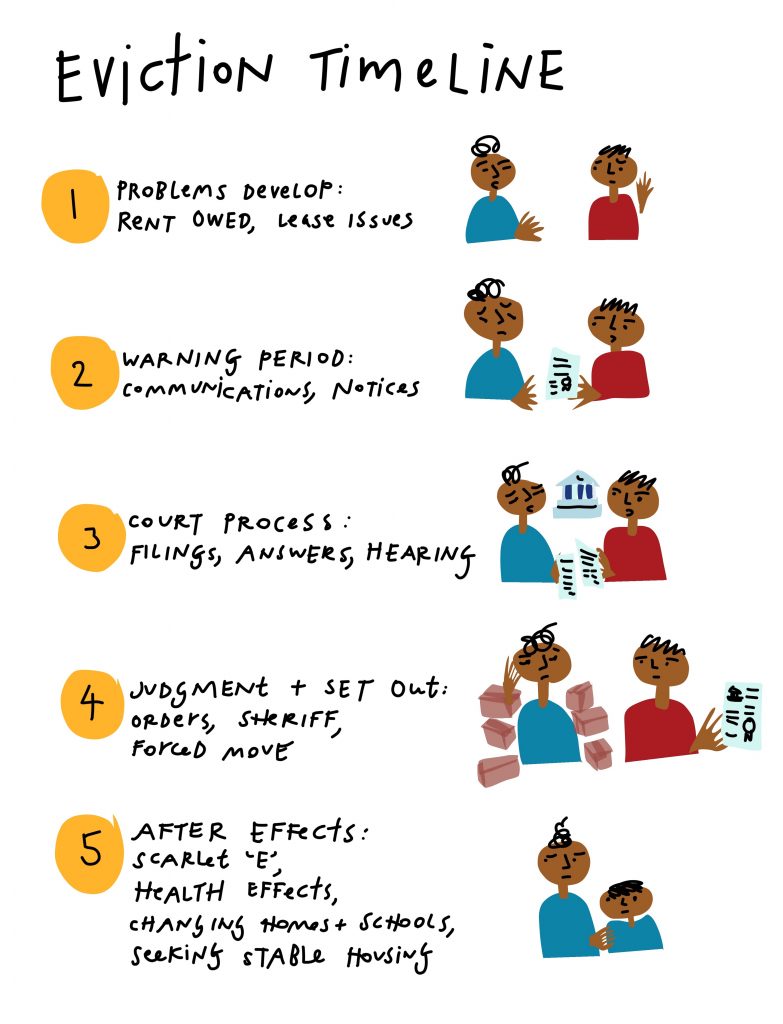
Eviction and Housing Reports and News Articles by State
Explore these links to reports and news articles (organized by state) concerning the American housing crisis, with an emphasis on eviction.
National Eviction reports
Badger, Emily, and Quoctrung Bui. “In 83 Million Eviction Records, a Sweeping and Intimate New Look at Housing in America.” The New York Times: Upshot, 2018.
Blau, Max. “Black Southerners Are Bearing the Brunt of America’s Eviction Epidemic.” The Pew Charitable Trusts: Stateline Article, January 18, 2019.
Desmond, Matthew. “The Eviction Epidemic: Forced Out.” The New Yorker.
Eckart, Kim. “Study Reveals Gender, Racial Disparities in Evictions.” Phys.Org, February 11, 2020.
Fresh Air radio show from NPR: First-Ever Evictions Database Shows: ‘We’re In the Middle Of A Housing Crisis’, April 2018.
Fresh Air radio show from NPR: First-Ever Evictions Database Shows: ‘We’re In the Middle Of A Housing Crisis’, April 2018.
Ginger, Kristen. “Eviction Filings Hurt Tenants, Even If They Win,” Shelterforce, 2018.
Kirchner, Lauren and Matthew Goldstein. 2020. How Automated Background Checks Freeze Out Renters. The New York Times. May 28.
Funk, Kyle, Tina Lee, and Lauren Lowery. “Using Data to Understand Your Local Eviction Crisis.” National League of Cities, October 6, 2020.
Swenson, Kyle. “Renters thought a CDC order protected them from eviction. Then landlords found loopholes.” Washington Post, October 27, 2020.
Mead, Joseph, and Marissa Pappas. “When Calling 911 Makes You a ‘Nuisance’ and Gets You Evicted.” The New York Times. November 9, 2017.
On the Media radio show from WNYC: The Scarlet E series on Eviction in America, June 2019.
Race Forward: The Center for Racial Justice Innovation. “Racial Equity Impact Assessment.” 2009.
Sandstrom, Heather, and Sandra Huerta. “Low-Income Working Families Fact Sheet: The Negative Effects of Instability on Child Development Low ‐ Income,” Urban Institute, 2013.
Lee, Tina and Lauren Lowrey. “Building a Just and Fair Anti-Eviction Strategy.” National League of Cities, September 3, 2020.
Rickard, Erika and Natasha Khwaja. “How States and Cities are Preparing for an Eviction Surge Once Moratorium Ends,” The Pew Charitable Trusts, July 26, 2021.
White House. “Biden-Harris Administration Announces Initiatives to Promote Housing Stability By Supporting Vulnerable Tenants and Preventing Foreclosures,” June 24, 2021.
California Eviction reports
Inglis, Aimee, and Dean Preston, 2018. “California Evictions Are Fast and Frequent.” Tenants Together. http://www.tenantstogether.org/sites/tenantstogether.org/files/CA_Evictions_are_Fast_and_Frequent.pdf.
Otis R. Taylor, J., 2018. “So, you got an eviction notice and have a few weeks to find an apartment…” San Francisco Chronicle. Available at: https://www.sfchronicle.com/bayarea/otisrtaylorjr/article/So-you-got-an-eviction-notice-and-have-a-few-13270312.php.
The University of Chicago, Center for Data Science and Public Policy. “Preventing San Jose Housing Violations.” Accessed March 12, 2020.
Treuhaft, Sarah, Jessica Pizarek, Ángel Ross, and Justin Scoggins, 2018. “Solving the Housing Crisis Is Key to Inclusive Prosperity in the Bay Area Contents.” San Francisco, CA. https://www.policylink.org/resources-tools/solving-housing-crisis-bay-area.
Hawaii Eviction Reports
Geminiani, Victor, Jennifer F. Chin, and Isaiah Feldman-Schwartz. “Evicted in Hawaii: Lives Hanging in the Balance.” Lawyers for Equal Justice, 2019.
Illinois Eviction Reports
Housing Action Illinois, 2018. “Prejudged: The Stigma of Eviction Records.” http://housingactionil.org/downloads/EvictionReport2018.pdf
Housing Action Illinois. “Eviction in Illinois.” Chicago, IL, 2019. https://housingactionil.org/downloads/EvictionBrief_February2019.pdf
Chicago Evictions: https://eviction.lcbh.org/ .
Louisiana Eviction Reports
Jane Place Neighborhood Sustainability Initiative. “Unequal Burden, Unequal Risk: Households Headed by Black Women Experience Highest Rates of Eviction.” 2019.
New Orleans’ Eviction Geography: Results of an Increasingly Precarious Market (the Jane Place Neighborhood Sustainability Initiative).
Maryland Eviction Reports
Public Justice Center. “How Renters Are Processed in the Baltimore City Rent Court.” Baltimore, Maryland, 2015.
Massachusetts Eviction Reports
Evictions in Boston Report. Boston, 2020, by researchers at Massachusetts Institute of Technology (MIT) and the non-profit organization City Life/Vida Urbana.
Michigan Eviction Reports
Akers-et-al. “The Eviction Machine: Neighborhood Instability and Blight in Detroit’s Neighborhoods” 2019.
Robert Goodspeed and Jim Schaafsma. Michigan Evictions Research and Policy Conversation. October, 2020.
Robert Goodspeed, Kyle Slugg, Margaret Dewar and Elizabeth Benton. “Michigan Evictions: Trends, Data Sources and Neighborhood Determinants.” 2019.
New York Eviction Reports
Make the Road New York. “Home Court Advantage: How Landlords Are Winning and Tenants Are Losing in Brooklyn Housing Court.” Brooklyn, NY, 2011.
New Settlement Apartments’ Community Action for Safe Apartments, Community Development Project, and Urban Justice Center. “Tipping the Scales: A Report of Tenant Experiences in Bronx Housing Court,” 2013.
Barker, Kim, Jessica Silver-Greenberg, Grace Ashford, and Sarah Cohen. “The Eviction Machine Churning Through New York City.” The New York Times. May 20, 2018.
NYU Furman Center. “Trends in New York City Housing Court Eviction Filings.” November, 2019.
Ohio Eviction Reports
Jones, Bob. “Akron Facing Highest Eviction Rate in Ohio, 24th Highest in the Country.” ABC News 5 Cleveland, December 16, 2019.
Elaina Johns-Wolfe, June 2018. “You are being asked to leave the premises”: A Study of Eviction in Cincinnati and Hamilton County, Ohio, 2014-2017. Sociology Department, University of Cincinnati.
Lucy May and Craig Cheatham, June 2018: What Nearly 50,000 eviction filings in four years have done to Hamilton County, I-Team 9.
Nick Swartsell, April 2018. These Cincinnati neighborhoods suffer the most evictions. CityBeat.
Affordable Housing Advocates and Northern Kentucky University, Eviction/Displacement Video interviews, Part 1: Faces of Displacement (6:25 minute video) and Part 2: Housing Court (5:40 minutes).
A FAQ from the court clerk on eviction process in Hamilton County.
Pennsylvania Eviction Reports
Pittsburgh Foundation, “Eviction in Allegheny County: A Mixed-Methods study,” April 2021.
City of Philadelphia, “At Home: Eviciton Prevention & Response Progress Report“, September 2019.
Reinvestment Fund, Policy Brief: Evictions in Philadelphia, January 2017.
Philadelphia’s Mayor’s Office’s Taskforce on Eviction Prevention and Response, June 2018.
Virginia State Eviction Reports
“Evictions in Richmond: Overview, Current Responses, and Program Proposals.” 2019.
Benjamin F. Teresa. “The Geography of Eviction in Richmond: Beyond Poverty.” 2016.
Woody Rogers. “The Connections between Evictions and Foreclosures in Richmond.” May, 2019.
Washington State Eviction Reports
Cookson, Tara, Maragret Diddams, Xochiti Maykovich, and Edmund Witter. “Losing Home: The Human Cost of Eviction in Seattle.” King County Bar Association, Seattle Women’s Commission, 2018. https://www.kcba.org/Portals/0/pbs/pdf/Losing Home 2018.pdf
Thomas, Timothy A., Ott Toomet, Ian Kennedy, and Alex Ramiller. “The State of Evictions: Results from the University of Washington Evictions Project.” Seattle, February 17, 2019. https://evictions.study/washington/
Washington D.C. Eviction Reports
Chason, Rachel. “Georgetown University Works with D.C. Agency to Improve Rental Inspection Policies.” The Washington Post. Accessed July 10, 2020.
Wisconsin Eviction Reports
Deena Greenberg, Carl Gershenson, and Matthew Desmond. “Discrimination in Evictions: Empirical Evidence and Legal Challenges.” 2016.
Academic Research on Eviction and the Housing Crisis
Explore this academic research on evictions. These articles from law, policy, sociology, design, and other scholars help explain how evictions work on the ground. They also offer visions of upcoming solutions and innovations for eviction-related issues.
Bezdek, Barbara. “Silence in the Court: Participation and Subordination of Poor Tenants’ Voices in Legal Process.” 20 Hofstra L. Rev. 533 20 (1992): 533–608.
Bernal, Daniel W, and Margaret D Hagan. “Redesigning Justice Innovation: A Standardized Methodology.” Stanford Journal of Civil Rights and Civil Liberties XVI, no. 2 (June 2020): 335–84.
Lynn M. Clark, Landlord attitudes toward renting to released offenders, 71 Fed. Probat. 20–30 (2007), https://heinonline.org/HOL/P?h=hein.journals/fedpro71&i=120
This study surveys landlords and property managers in Akron, Ohio about how they screen renter applicants, and their attitudes to housing people with criminal records. It found that landlords looked at eviction history, employment, and income as the main factors in screening. Ultimately, they are trying to determine ‘trust’. If a tenant can show signs of rehabilitation, then they would be open to renting to them, even despite a criminal history.
Mychal Cohen & Eleanor Noble, Preventing Eviction Filings: Piloting a Pre-filing Eviction-Prevention Clinic (2020), https://view.ckcest.cn/AllFiles/ZKBG/Pages/984/preventing-eviction-filings-piloting-a-pre-filing-eviction-prevention-clinic.pdf
This report covers the case of the St. Paul, Minnesota housing court, that implemented the Ramsey County Pre-Filing Eviction Clinic. It focuses on preventing eviction filings by getting mediation, housing funds, and legal services to tenants and landlords before they file a lawsuit. They document the 227 participants during the pilot. They found tenants were time-poor and stressed with multiple crises, so they might struggle with using the clinic & all its services. They advocate having a one-stop shop.
Desmond, Matthew, 2012. “Eviction and the Reproduction of Urban Poverty,” American Journal of Sociology, 118(1), pp.88–133. Available at: https://www.journals.uchicago.edu/doi/10.1086/666082
Desmond, Matthew, and Carl Gershenson. “Who Gets Evicted? Assessing Individual, Neighborhood, and Network Factors.” Social Science Research 62 (2017): 362–77.
Jino Distasio & Scott McCullough, Eviction Prevention: Toolkit of Promising Practices (2016), https://winnspace.uwinnipeg.ca/handle/10680/1200
This toolkit presents lessons learned from housing providers in Canada. They propose a services-driven model to avoid eviction filings and the disastrous cycle that can lead to. It presents case studies, programs, and best practices.
Garboden, Philip ME, and Eva Rosen. “The Threat of Eviction: How Landlords Shape a Contingent Tenure.” City & Community, January 2019, 1–38.
Brian G Gilmore, “Everybody Loves the Landlord”: Evictions and the Coming Prevention Revolution, 41 Mitchell Hamline Law J. Public Policy Pract. 201–230 (2020), https://open.mitchellhamline.edu/policypractice/vol41/iss3/5
Gilmore’s article lays out the history of landlord-tenant law in the US, and presents how case law has changed. It also presents how new eviction diversion programs are a way to protect tenants and get to better outcomes.
Groves, A.K., Niccolai, L.M., Keene, D.E. et al. Housing Instability and HIV Risk: Expanding our Understanding of the Impact of Eviction and Other Landlord-Related Forced Moves. AIDS Behav 25, 1913–1922 (2021). https://doi-org.stanford.idm.oclc.org/10.1007/s10461-020-03121-8
This article finds a connection between landlord-related forced moves (including legal evictions that go through the courts), and higher rates of HIV risk. It finds that forced moves are related to higher rates of risky behavior and sexual vulnerability.
Humphries, John Eric, Nicholas Mader, Daniel Tannenbaum, and Winnie van Dijk. “Does Eviction Cause Poverty? Quasi-Experimental Evidence from Cook County, Il.” SSRN Electronic Journal, 2019.
Lebowitz, Julie, Auditor-In-Charge Nancy Augustine, and Kathleen Patterson. “Housing Code Enforcement: A Case Study of Dahlgreen Courts.” Washington, DC, September 24, 2018. www.dcauditor.org.
Martineau, Kim. “A Model for Predicting Where Landlords May Be Skimping on Heat.” Columbia University Data Science Institute, October 8, 2015.
Northridge, Jennifer, Olivia F. Ramirez, Jeanette A. Stingone, and Luz Claudio. “The Role of Housing Type and Housing Quality in Urban Children with Asthma.” Journal of Urban Health 87, no. 2 (March 9, 2010): 211–24.
Pastore, Clare. “Gideon Is My Co-Pilot: The Promise of Civil Right to Counsel Pilot Programs.” University of the District of Columbia Law Review David A. Clarke School of Law 17, no. 1 (2014): 75–130.
E. L. Raymond, T. Green & M. Kaminski, Preventing Evictions After Disasters: The Role of Landlord-Tenant Law, 32 Hous. Policy Debate 35–51 (2022), https://www-tandfonline-com.stanford.idm.oclc.org/doi/abs/10.1080/10511482.2021.1931929
This article reviews how quickly landlords evict tenants after a disaster recovery period. The study uses a quantitative approach to examine census bloc groups to see which neighborhoods are affected by evictions after disasters and compares how tenant protections in the legal framework affect this rate. The study recommends moratoria and more assistance after a disaster.
Steinberg, Jessica. “Informal, Inquisitorial, and Accurate: An Empirical Look at a Problem-Solving Housing Court.” Law and Social Inquiry 42, no. 4 (2017): 1058–90. https://doi.org/10.2139/ssrn.268900.
Steinberg, Jessica. “Demand Side Reform in the Poor People’s Court.” Connecticut Law Review 47, no. 3 (2015): 741.
Summers, Nicole. “The Limits of Good Law: A Study of Housing Court Outcomes.” University of Chicago Law Review 87, no. 1 (2020): 3.
Collinson, R. and D. Reed. “The Effects of Evictions on Low-Income Households.” (2018).
Deena Greenberg, Carl Gershenson, and Matthew Desmond Discrimination in Evictions. (2015).
Chester Hartman and David Robinson. Evictions: The Hidden Housing Problem. (2003).
Karlee M. Naylon, Anna C. deDufour, and Karen A. Lash. Civil Legal Aid Funding in the Time of COVID-19. 2020.
John and Terry Levin Center for Public Service and Public Interest
Stanford Law School. San Francisco Right to Civil Counsel Pilot Program Documentation Report. 2013.
Julieta Cuellar, “Effect Of “Just Cause” Eviction Ordinances On Eviction In Four California Cities,” Journal of Public & International Affairs. Princeton University. https://jpia.princeton.edu/news/effect-just-cause-eviction-ordinances-eviction-four-california-cities. 2019
Organizations working on the eviction crisis
The following organizations are intended to support those currently experiencing eviction related hardships, and the majority exist nationally.
“The National Housing Law Project’s mission is to advance housing justice for poor people and communities. We achieve this by strengthening and enforcing the rights of tenants, increasing housing opportunities for underserved communities, and preserving and expanding the nation’s supply of safe and affordable homes.”
National Law Center on Homelessness & Poverty
“The National Law Center on Homelessness & Poverty is a 501(c)3 nonprofit organization based in Washington, D.C., and is the only national legal group dedicated to ending and preventing homelessness. We operate programs across the United States that serve America’s more than 3.5 million homeless families, children and individuals.”
“The National Housing Trust is the nation’s leading expert in preserving, improving and maintaining affordable housing – ensuring that privately owned rental housing remains in our affordable housing stock and is sustainable over time. Using the tools of real estate development, rehabilitation, finance, policy advocacy in conjunction with sustainable practices, the Trust is responsible for saving more than 36,000 affordable homes in all 50 states, leveraging more than $1.2 billion in financing.
National Low Income Housing Coalition
“Founded in 1974 by Cushing N. Dolbeare, NLIHC educates, organizes and advocates to ensure decent, affordable housing for everyone. Our goals are to preserve existing federally assisted homes and housing resources, expand the supply of low income housing, and establish housing stability as the primary purpose of federal low income housing policy.”
“NHC is all about connection. Our unique vantage point in the housing community means we can connect research to practice, advocate across the continuum of housing and deliver the research, resources and experts you need to do your work to move housing forward. Whatever your interest in housing, you can come to NHC for information to fuel your work and to collaborate for positive policy change at every level.”
“Just Shelter was founded by Matthew Desmond and Tessa Lowinske Desmond to raise awareness of the human cost of the lack of affordable housing in America and to amplify the work of community organizations working to preserve affordable housing, prevent eviction, and reduce family homelessness.”
National Alliance to End Homelessness
“The National Alliance to End Homelessness is a nonpartisan, nonprofit organization whose sole purpose is to end homelessness in the United States. We use research and data to find solutions to homelessness; we work with federal and local partners to create a solid base of policy and resources that support those solutions; and then we help communities implement them.”
National Coalition for a Civil Right to Counsel
“The National Coalition for a Civil Right to Counsel (NCCRC), organized and funded in part by the Public Justice Center, is an association of individuals and organizations committed to ensuring meaningful access to the courts for all. Founded in 2003, our mission is to encourage, support, and coordinate advocacy to expand recognition and implementation of a right to counsel for low-income people in civil cases that involve basic human needs such as shelter, safety, sustenance, health, and child custody.”
“The RVA Eviction Lab, housed at VCU within in the Wilder School of Government and Public Affairs, focuses on meeting eviction data and research needs and supporting the work of local government, community-based organizations, elected officials, and other advocates. The RVA Eviction Lab takes the necessary deeper dives into the qualitative and quantitative aspects of evictions. Because this problem and the associated research questions will continue to shift both regionally and locally, we make data public, reliable, and responsive to the needs of the community, region, and the state.”
“Rent Ready Norfolk (RRN) is a comprehensive, voluntary program designed to increase the number of viable residential rental properties in the City of Norfolk and assist renters and landlords.”
